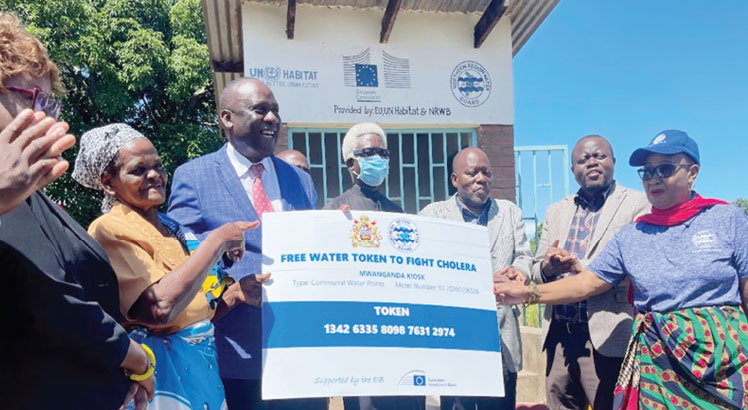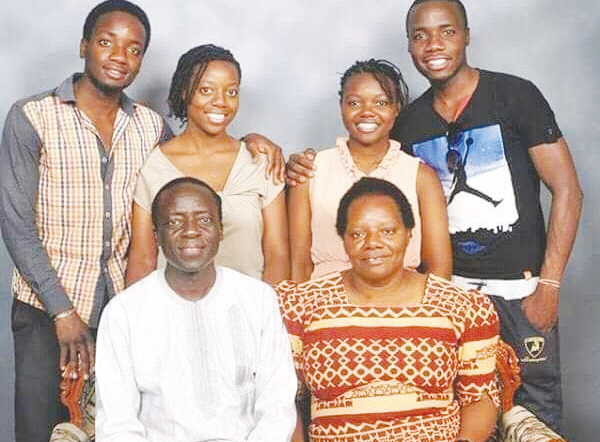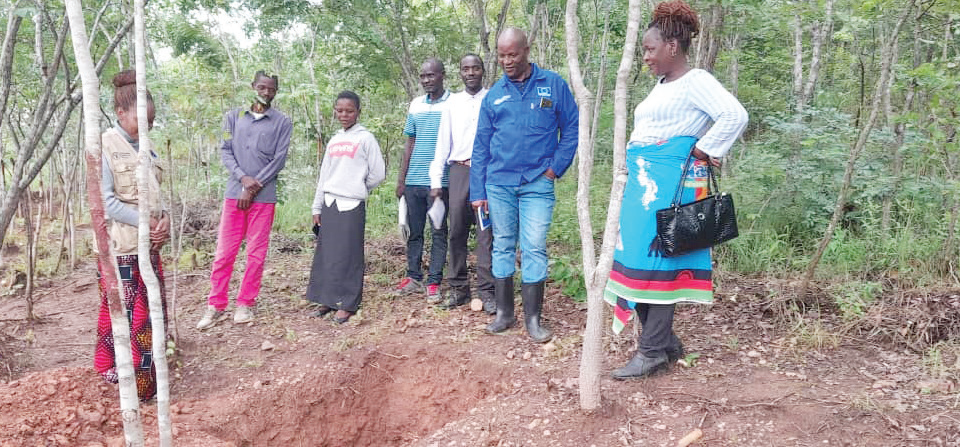Mbeya: Farmer innovations count

He collects pails of maize bran and animal dung. He mixes the smelly cargo with chemical fertiliser, packs the mixture in airtight sacks, stitches the bags and stores the manure in a dry area for 21 days. While waiting for the next customer or growing season— as the manure matures— the smallholder farmer embarks on other businesses to enhance the livelihood of his family.
Binwell Mbeya, a farmer in Mzimba rural has fashioned a soil-enriching mixture credited with bringing bumper harvests just when land is becoming barren, fertiliser prices are skyrocketing and rains increasingly unpredictable.
Mzuzu Agricultural Development Division (Mzadd) and its partners praise the Enyezini resident’s brainchild for exemplifying the power of harnessing local knowledge and innovations to increase yield and overcome harsh effects of climate change.
However, Mbeya believes the manure named after his clan name is also a wake-up call for farmers because nothing will change unless they take drastic action to surmount age-old challenges that expose farming families to hunger and poverty.
“Poverty is not the reason most farmers in the country face hunger every year. Not many think beyond their predicaments; they are still doing business as usual although we all have answers to our prevailing problems,” says Mbeya.
He is one of the lead farmers charged with propagating modern farming methods in Traditional Authority (T/A) Kampingo Sibande which is among areas hit by shortage of agricultural extension workers.
The area, whose food situation was worsened by erratic rains, lengthy dry spells last year and spates of poor farming methods have led to massive soil erosion. The water racing downstream through gaping gullies carry with them fertile soils, leaving the fields breached.
“We cannot continue doing business as usual. Something has to avert the tragedy unfolding before our eyes,” he says.
When the rain season is over, Mbeya reaches out to about 30 followers every growing term to help them realise bumper crops even on barren soils.
He and his wife sometimes take days off work teaching farmers how to make their own Mbeya Urea and Mbeya 23:21:0 whose popularity is fast spreading beyond Mzimba.
Among those that have come to learn from him are researchers and agriculturalists, he says.
The visits and travels alone are a massive endorsement considering that the innovator did not complete primary education. He does not know his birthday. He only remembers his deceased father telling him: “You were born in 1967; three years after Nyasaland became the independent Republic of Malawi.”
He unpacks his hands-on technology in simple terms, not the jaw-breaking diction of university-baked brains relentlessly experimenting with new ways of farming in the laboratories of Chitedze and other research stations.
When asked about his education, he says: “I quit school early because my father couldn’t afford fees, but that did not stop me thinking.”
In his words, figuring out the best way to restore the bleak soils’ potential and beat effects of climate change is what he has been doing since boyhood.
“My parents always advised us to mix chemical fertiliser with gaga (chaff), but I kept asking myself: What can happen if I mix it with fresh cow dung?”
The answer came in 2000 when his family was one of the recipients of government-sponsored starter parks which included just 10kg of fertiliser per household.
“Being one of the beneficiaries exemplifies my poverty. Since I couldn’t afford a 50kg bag of fertiliser, which was selling at K2 000, I had to find a way to supplement the starter pack,” Mbeya explains.
Mzadd—which is working with the development fund of Norway to support farmer innovation for environmental-friendly and sustainable agriculture in Enyezini— cite Mbeya as a reliable and affordable technology because the additives are locally found.
Enyezini agriculture extension and development coordinator Anna Nyirenda commends the farmer for taking a leading role in conceiving and spreading trusted farming methods in view of prevailing challenges.
“Rural areas often experience shortage of extension workers. The technologies emanating from farmers show the villagers are interested in playing their rightful role to end hunger and poverty using locally available knowledge and materials,” she said.
Mbeya mixes one pail of animal dung with one pail of moist bran and five kilogram’s of any type of factory-made fertiliser. The loose mixture should be turned several times until it is brown during the 21 days of curing.
“A 50kg bag of chemical fertiliser produces 20 bags of Mbeya,” he says.
This is not only enough for one acre of maize, It also fetches him about K50 000 since he sells his offerings at K2 000 – K2500 a bag. This could account for up to K250 000 if only he kept churning out 100 bags every month. Sometimes production drops due to shortage of raw material.
“Only one thing remains: The popularity of Mbeya is rising and so will the price,” he declares.
Truly, Mbeya has become a buzzword in the district and beyond. Many organisations and individuals are now promoting his manure.
Just last year, he went to Zambia on invitation to teach farmers at Muyombe how to make it.
So far, Mzadd’s partner, the development fund of Norway has documented Mbeya’s innovation for training other farmers in Dowa, Ntchisi, Mzimba, Rumphi and Nkhata Bay where it works with locals and existing action groups to promote sustainable farming methods.
Mahara Nyirenda, agricultural coordinator for the Norwegian development agency, says the country can benefit immensely by supporting indigenous technologies handed from one generation to another.
“The Development Fund of Norway supports farmers. Apart from documenting the farmers’ exploits, we organise demonstrations to ensure exceptional farmers are recognised for their innovations and to offer onlookers to learn from them,” he said.
Just by applying a teaspoon between maize planted at one crop per station, Mbeya’s much-maligned “dry patch”, which used to produce five bags, now produces 30.
Millennium Villages, a United Nations (UN)-backed initiative striving to Millennium Development Goal (MGD) of ending poverty and hunger, has also adopted the technology in aid of communities in Mzimba North East.
Senior chief Mtwalo sighed: “I thought Mbeya comes from Tanzania. I didn’t know it is an innovation by fellow Malawians. We need more of these as farmers are harvesting less and less due to elusive rains and poor soils.”
Mzadd programme manager Agnes Moyo praised his manure, saying farmers in the agricultural division which encompasses Mzimba, Rumphi and Nkhata Bay were increasingly adopting the innovation in mitigating effects of climate change.
Likewise, MillenniumVillages country director Dr Andrew Daudi, an agricultural researcher who once served as principal secretary for the Ministry of Agriculture and Food Security, promised to spread the praiseworthy technology to Zomba and other areas where the project works.





